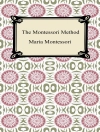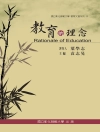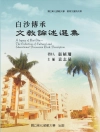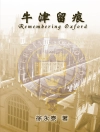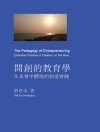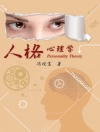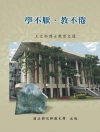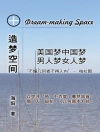Few blocks in Canada match the golden history of St. James Square purchased in 1850 by that Canadian giant, Egerton Ryerson. One of the great innovators and entrepreneurs in education! This tells how he founded Ontario’s school system there after a long fight to get schools for every one. The Square was more than just the first home of his ministry because he inspired a provincial museum, art gallery, art school, model school and teacher’s college there which changed Toronto.
The university that was the final grand accomplishment for the Square has endured more perils than most movies. Many of the barriers it had to overcome are described here for the first time. Every year brought more gauntlets to survive before an uncaring clutch of politicians who really didn’t care much as long as it didn’t cost too much and burn down and make them look bad.
The university now is a true city institution. Town and gown intertwine, and also inspire the neighbourhood. Yet the bureaucrats almost moved it to cheaper land in the suburbs.
Circumstance forced early instructors and professors into so many challenging duties that David Crombie, the future mayor and federal minister, ended up teaching Sociology to five courses, a subject he had never taken himself. Ted Toogood taught English and supervised athletics at the same time as he captained the Toronto Argos and led the team to victory in the first televised Grey Cup.
There were premiers who never really understood what the institute did. One of them tried to eliminate all of its three-year courses which would have crippled it forever. Ryerson Institute of Technology had to prove itself constantly because bureaucrats idolized universities and looked down their noses at newfangled technological education.Then just as it shook off the difficulties of its early life in a grungy neighbourhood, it faced crushing competition from new and jealous universities and colleges in the battle for provincial grants and the academic lifeblood of enrolment.
There were many ironies. The Hall built by Egerton had been one of the architectual treasures of the city, a magnet for visitors because of its pleasant grounds and exhibits that were unknown in the rest of the new country. Then it was demolished without much fuss. It never would have happened just a few years later. There was a fascinating treasure hunt for the valuables in its cornerstone which was never found, which symbolized just how careless the province and the city had been with the Square over the decades.
There was even a president who blazed through the institute like one of the missiles he launched into space and the record books. His early notorious partner was assassinated because of the super cannons he built that changed world warfare.
For more than a century, important developments in education began and flourished there. Canada’s first major institute of technology served as a model for the provincial colleges of arts and technology and then evolved into Ryerson University in this story by a veteran Toronto journalist and commentator who witnessed much of the early days as student president and member of important administration committees. John Downing is a commentator, author and commentator who has written three books, thousands of columns and editorials and appeared regularly on television. His experience in journalism and the community ranged from being President of the Canadian National Exhibition to Editor of the Toronto Sun.
Inhaltsverzeichnis
The book details Egerton Ryerson’s early colourful life and his battles with the Family Compact and the firebrand rebel, William Lyon Mackenzie.Truly a giant in education! Then comes his difficult campaign to create a successful system of education for all in Ontario, his purchase and building of a complex at St. James Square to be his education headquarters but also the incubator for the first public museum, art gallery, teacher’s college, model school and agriculture experiments in Ontario and indeed for much of the new country.
His travels are detailed where he spent months abroad buying exhibits and art for his Square which transformed it into a must destination for any visitors. The Square became famous throughout North America.
Just as the Square was worn out and most of its innovations had left for new quarters, and the last occupant, the major teacher’s college in the province, also wanted to move out, war struck and it was filled with instant military buildings as it became an important training centre for the RCAF. After years of intensive training there under the supervision of H.H. Kerr, who became known as one of the experts in technical training, the provincial government developed a new use for the Square. It was worried about what to do with all the returning veterans whose lives had been interrupted, so the Square became the centre for thousands of vets to finish their high schooling in crash courses. The equipment left behind by the airforce and vocational wartime training of civilians was used in a centre for apprentices to be trained in all the new complexities.
Kerr and his senior instructors like Eric Palin were convinced that the post-war economy would stagnate without special technical training to handle the new jobs. So they schemed to use the mix of buildings and surplus machinery to house a new institute of technology which quickly grew into the major institute of its kind in Canada.
The insistence of Kerr and his loyal pioneers to include liberal arts subjects meant that the new Ryerson Institute of Technology was never just another trade school, the insult it had to endure in its early years as it evolved upwards in the sophistication of its courses. There was pressure by the pioneers to adopt the trappings of universities. Yet there was also a near paranoia on their part about the appearance and behaviour of the students.
The last of the trades and apprenticeship courses moved out to what eventually became George Brown College and Ryerson had a busy Fifties as it established its courses, instant traditions and participation in college athletics. However, Kerr’s dictatorial style in protecting his baby caused endless problems. The daffy beginnings of CJRT are told, the battles over censoring The Ryersonian, the endless problems caused by the ramshackle buildings becoming fire traps.
In the 1960s, Kerr left, an independent board took over, and just as the institute faced happy adulthood, the community colleges of arts and technology were created as early copies and then they became competitors for grants, students and staff along with the new universities that were created after placid decades. Ryerson gained much of what it wanted in the way of university powers after a stormy period with Donald Mordell as president. Student power and increased faculty militancy meant the old ways vanished of administrators running everythin.
The book finishes with the hiring of Walter Pitman to smooth the final decade before Ryerson became a university in every sense.


